Ravensworth House stood in its own grounds on the site bounded to the south by what is now College Street (at that time an eastward curving extension of Victoria Street); to the East by Oxford Street; to the North by ‘Church Path’ (Oxford St to Victoria St) and to the West by Victoria Street. The site is now occupied by Ravensworth Terrace and the properties on the North of the East end of College Street.
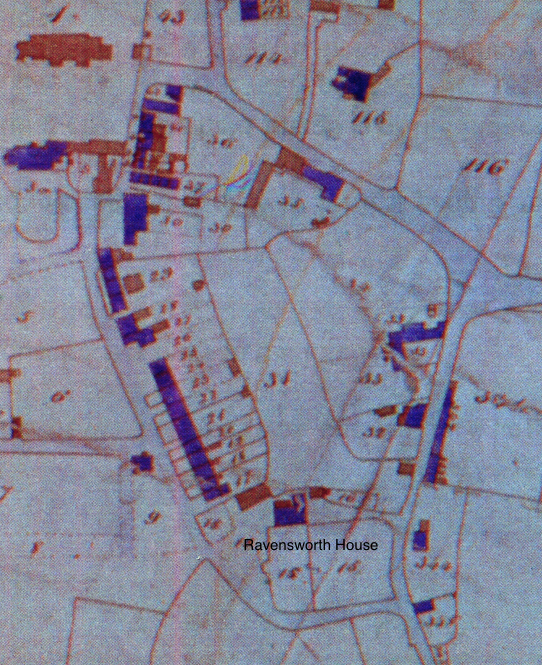
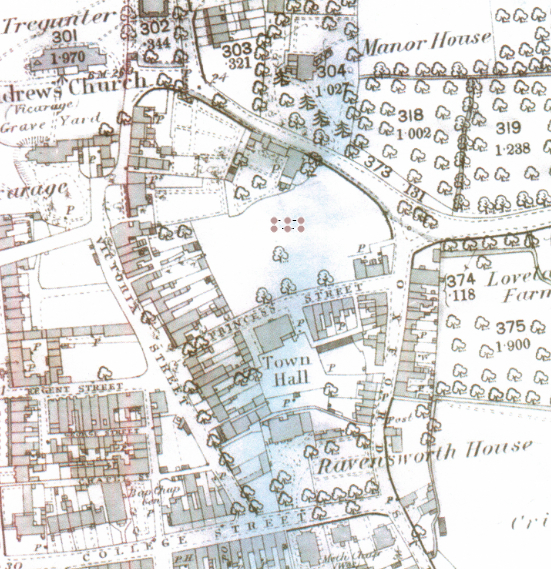
The original part of the house, 3 storeys and Georgian in style, is marked on the 1843 Tithe Map. The registry number on this map identifies the land as belonging to William Clements. According to this map the access to the property was to the East side along a line parallel to what is now Church Path.
Census data of the time indicate that William Clements lived in the house, which was then known as ‘Barley Pen’ House, named after the land on which it was built. The land owned by Clements extended southwards , from the house, for some distance between what is now Oxford and the sea front. His name is also recorded in connection with the development of the Albion Hotel and Rifleman’s Arms on the south-west corner of College St and High St. It is possible that he may have been involved in the construction of some of the streets which cross what was his land and there is a record that College St was originally known as Clements St.
Two extensions, one of two storeys and one of a single storey were later added to the Eastern side of the house. These are visible on the photograph and on the Ordnance Survey map of 1884 which also show that the main entrance driveway was now to the front, from College Street, which had by then been cut right through to the Esplanade. We can speculate that Clements may also have been responsible for this change.
An indenture of 1858 witnesses the sale of the house and its immediate plot of land by George Reed. The document (below) clearly locates the property by showing the boundary as Oxford St to the east; Church St (now Victoria St) to the west and Church Path to the north. This indicates that at some point WIlliam Clements had sold this parcel of land to George Reed, though census data suggest a possibility that Clements continued to live in the house through the 1850’s. and possibly into the 1860’s.
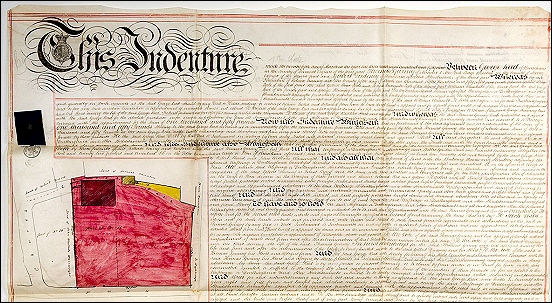
Cuthbert Ritson is shown as resident in records of 1872 & 1875 but not on the previous record of 1866. Ritson owned timber yards at Highbridge and became very involved in Burnham and Highbridge civic life.
From Bath Chronicle Thursday June 10th 1880:
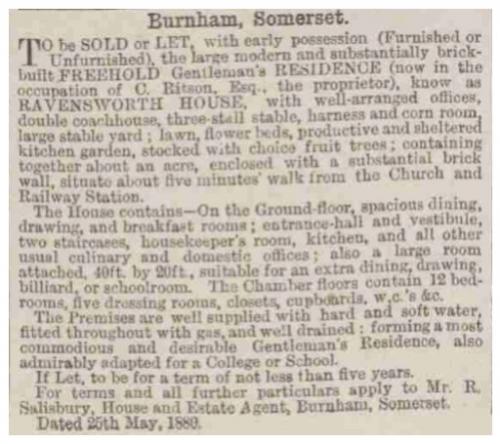
By 1880 the House had been converted into a small private school, of a kind which was common in the nineteenth century (there may indeed have been others in Burnham). The school was run by William Clarke. The Advertisement below uses the photograph at the top of the page.
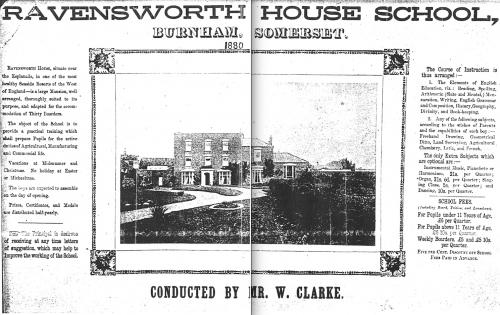
The advertisement states that there is accommodation for 30 boarders. However, the 1881 census shows that in addition to Clarke and his wife there were two other teaching staff in residence (Clarke’s son & daughter it appears), two general servants and 12 scholars. By 1888, it seems, the school may have been accommodating 30 boarders and also educating a number of local boys as day pupils.
Copies of 3 pieces of work by pupils and an award certificate are known to survive. Two drawings appear to be signed C. G. Puddy and are dated 1885 & 1886. George A. Puddy (11) appears as one of the scholars on the 1881 census. It is possible that this is the same boy or a relative who later came to the school. The certificate was awarded to Henry Robert Haines who is also responsible for a decorated handwriting exercise about Christmas. Both of these dated 1883. We would be grateful for contact from anyone who knows of other surviving work or records from the school, or records from the earlier life of the house.
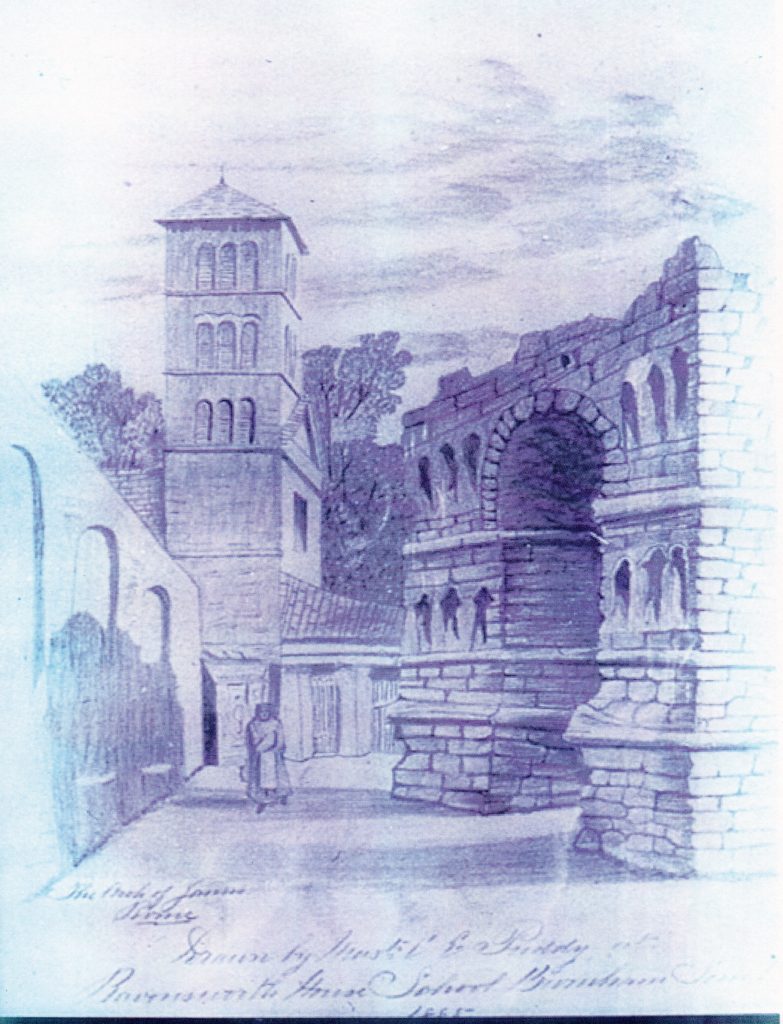
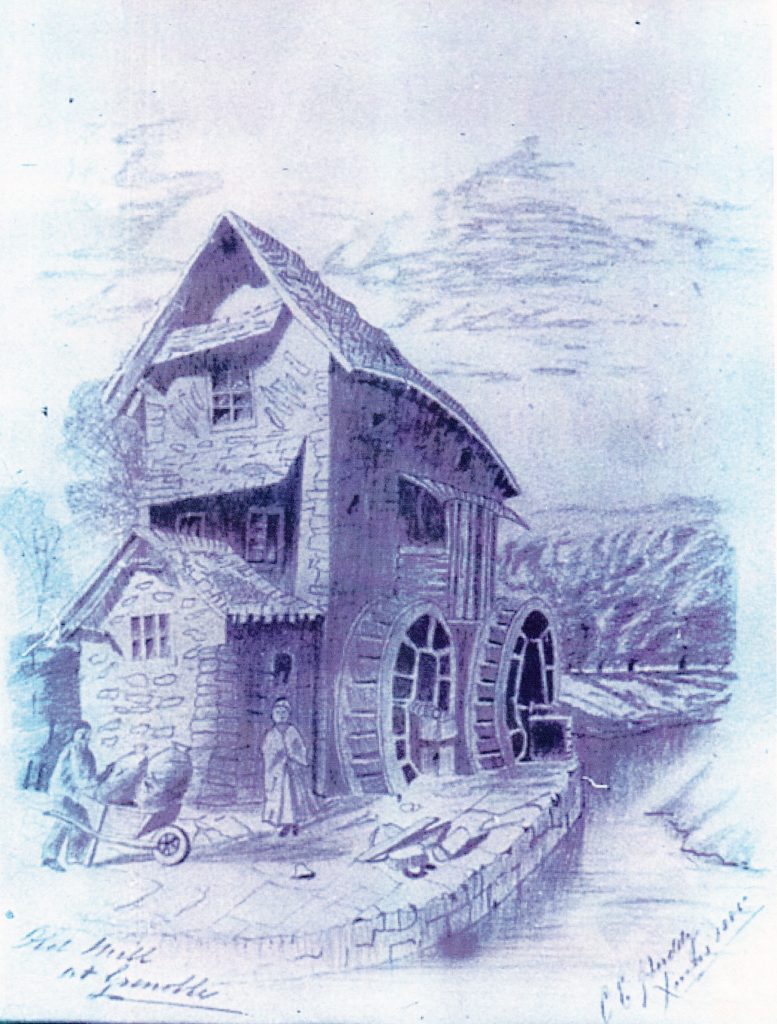
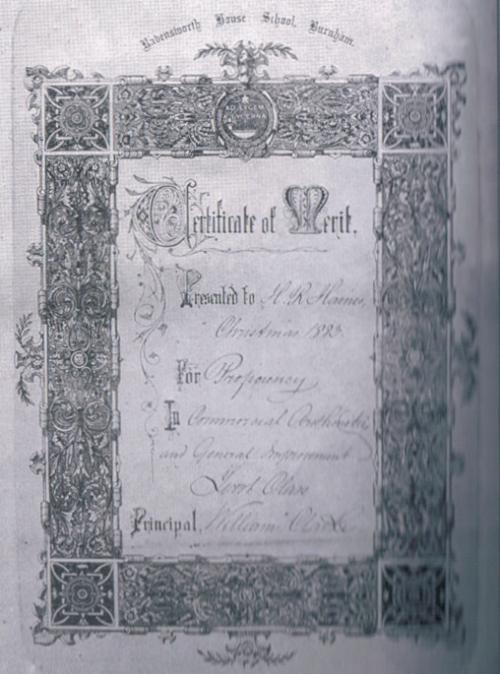
From Bath Chronicle Thursday November 1st 1888:
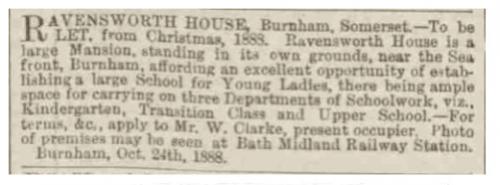
Records of 1889 show a William Clarke occupying No.1 Catherine Terrace, Sea View Road, it is not clear whether he did any teaching at this address. However Kelly’s Directory of 1889 has a record of Bertha Clarke as “Professor of Music” at 1 Catherine Terrace. This is likely to be William’s daughter, who was previously listed as an 18 year old music teacher on the 1881 census.
It seems likely that the notice below from the Western Gazette of 31st May 1889 refers to our William Clarke and explains the move to Catherine Terrace.
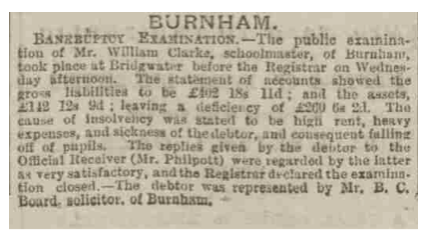
From 1892 (probably Western Gazette):
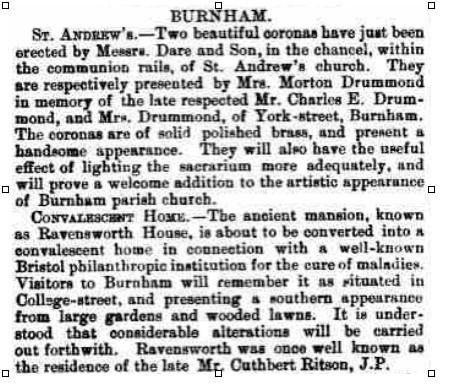
There seems to be no evidence of this proposal ever coming to fruition as by December 1894 the ‘Ravensworth Estate’ was being redeveloped by Robert Squibbs, Thomas Stockham and Thomas Dare. New housing was built on northern College St, western Oxford St and the new Ravensworth Terrace, which was cut from Oxford St across the carriage circle in front of the house . The last of the new properties built on the site was No. 38 on the corner of CollegeStreet and Oxford Street, in 1903. The 1884 map and the photograph give the impression that this corner of the site may have been a vegetable garden for the house.
Below is a superimposition of the ground plan of Ravensworth House (blue, carriage drive red) on the plan of Ravensworth Terrace (present buildings and road in pink).
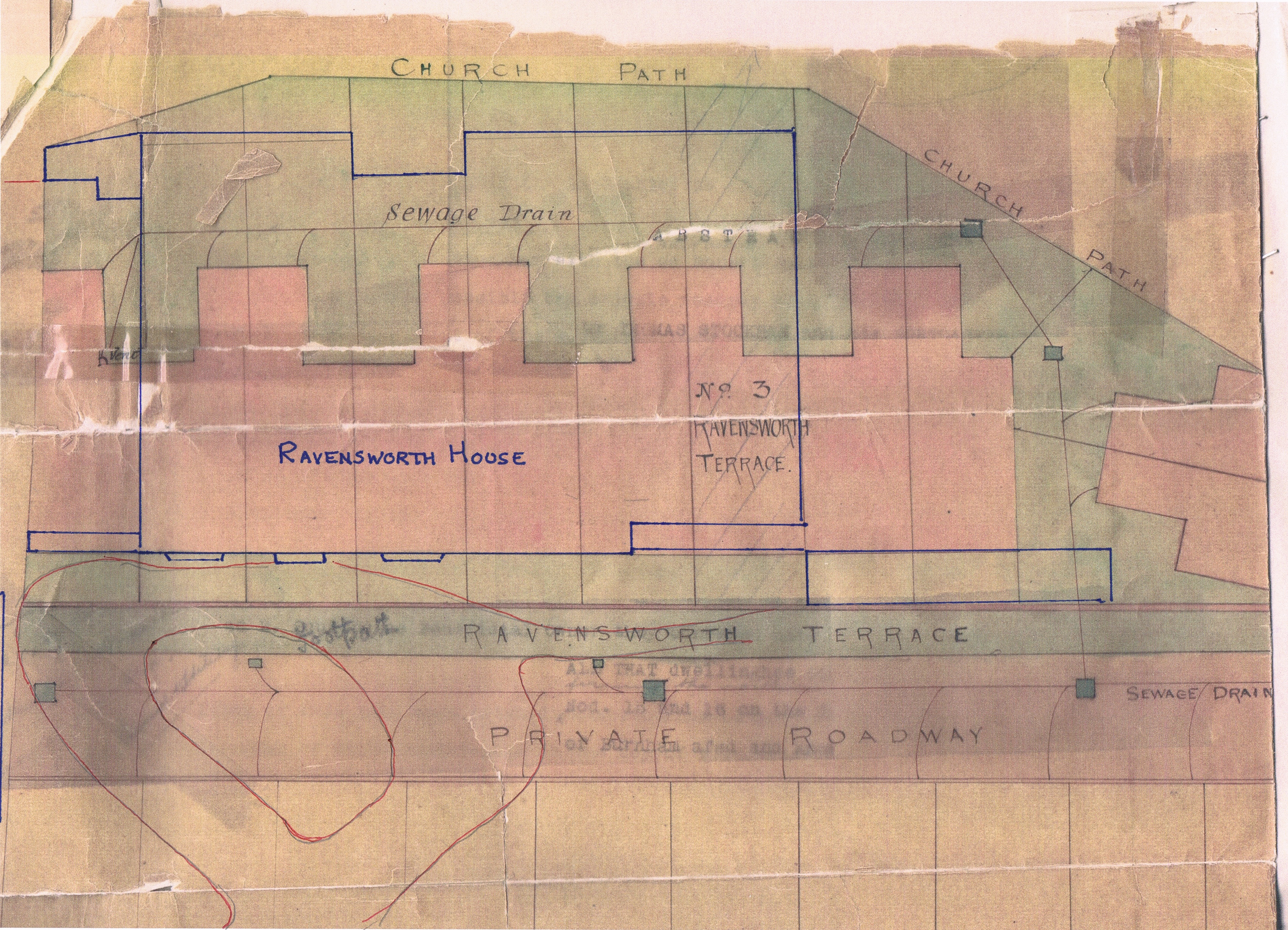

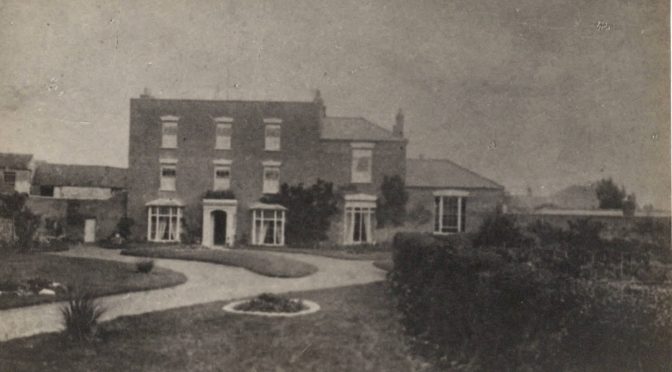
I have the deeds to my property dating from 1809 but also mentioning owners previous to that date I read some time ago an article stating at one time Victoria street ended at Rock cottage a property belonging to ravensworth school long since demolished and a reference to rock house which I cannot. The stone in part of my property matches the remainder of in what I believe to be the remainder of Ravensworth house
Thanks for your further comments. I have replied by personal email.
I believe my home is connected to ravensworth house is there any more information
Thanks for your comment and question. Unfortunately we have no more information than is on the page at present. We know that the house was in situ by 1843 as it is shown on the tithe map of that time which is the earliest we have of that spot. However we know nothing of when it was built or by whom, nor of the origin of the name.In what way do you believe your home is connected?